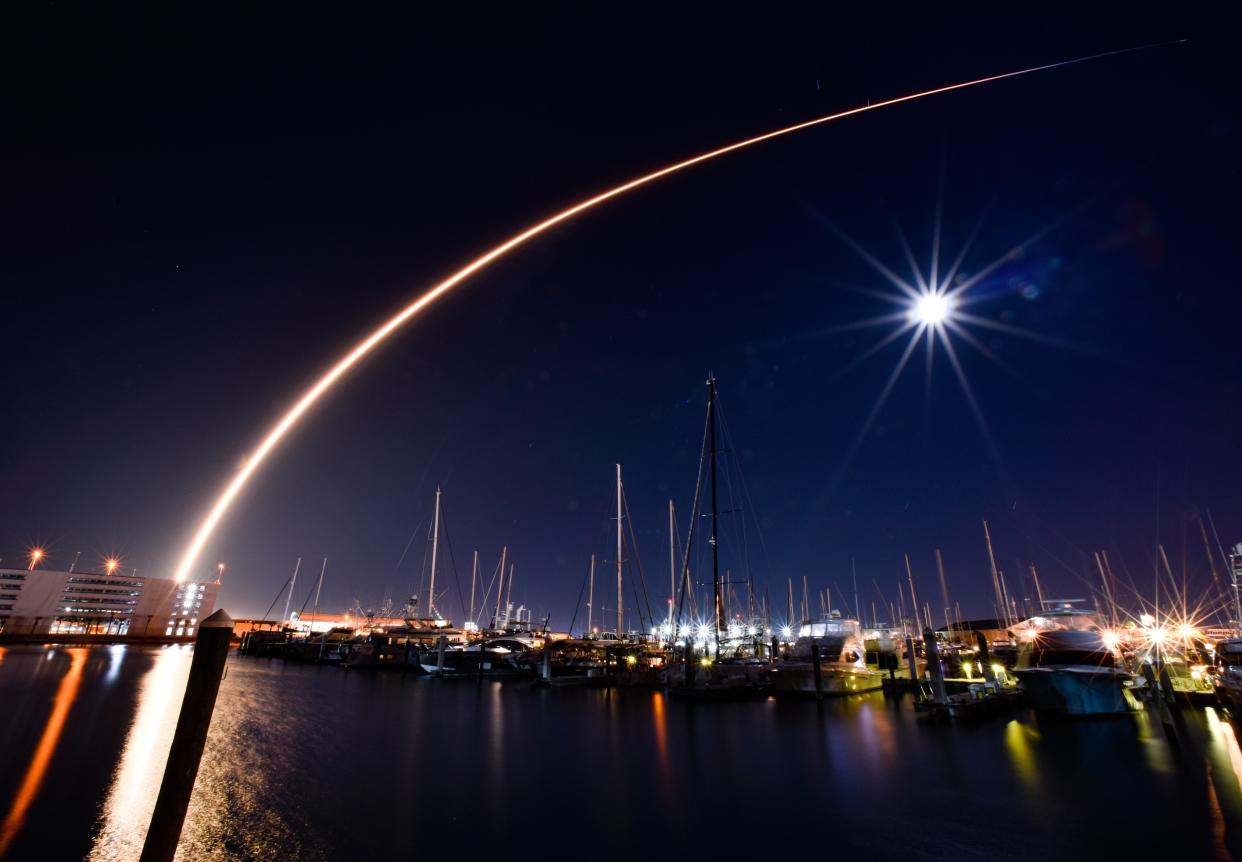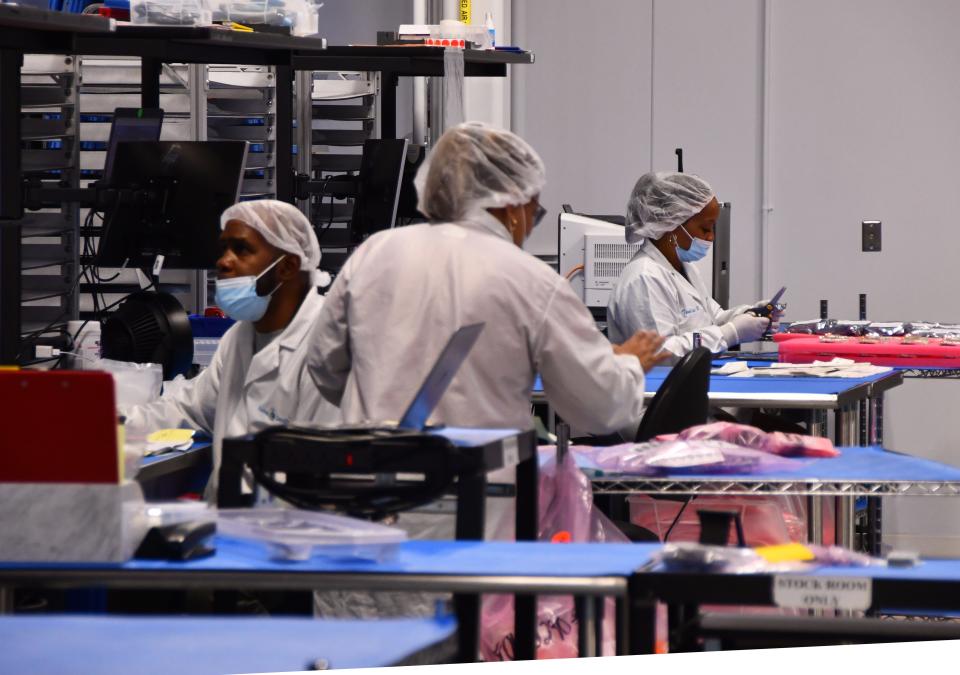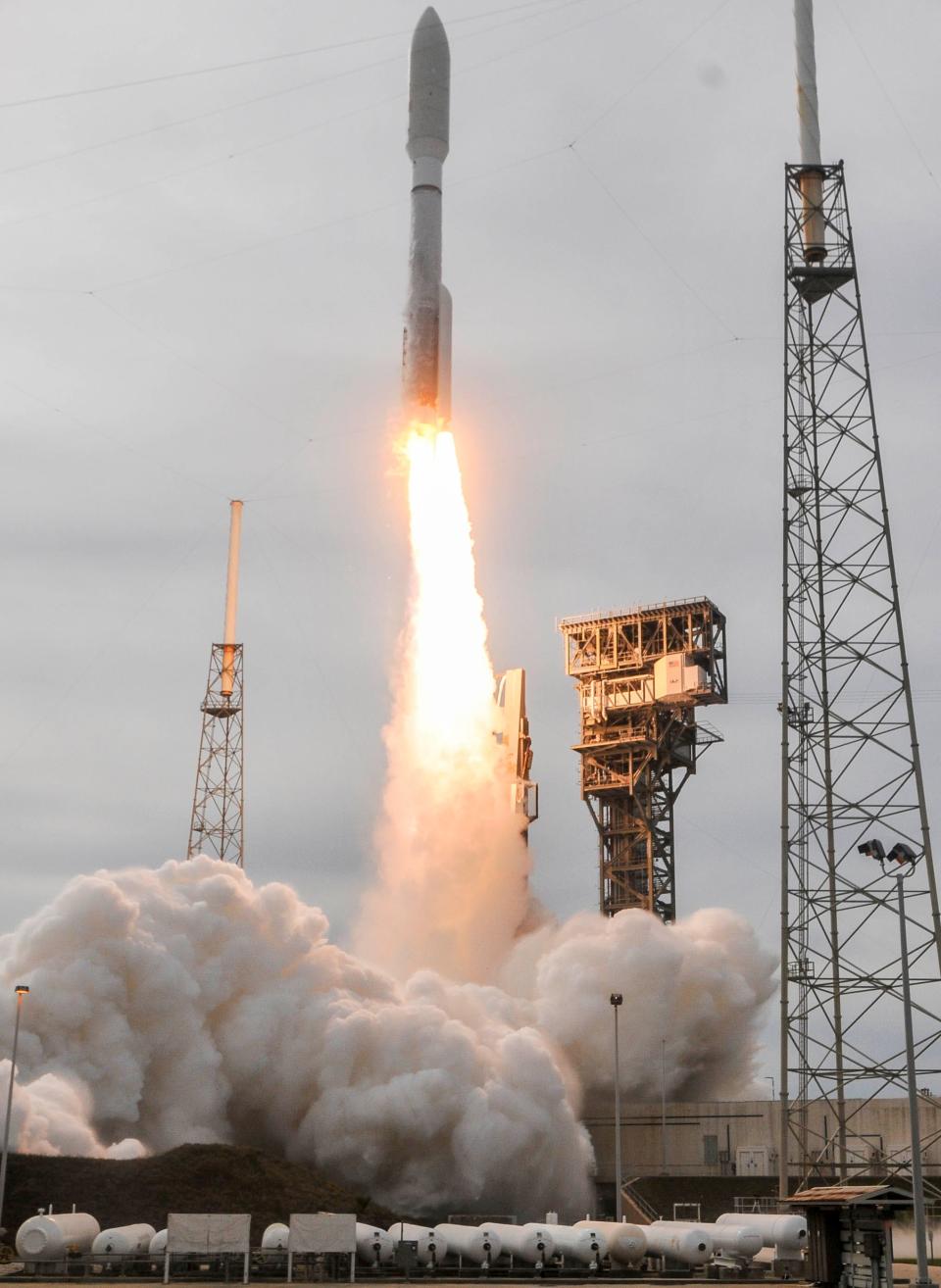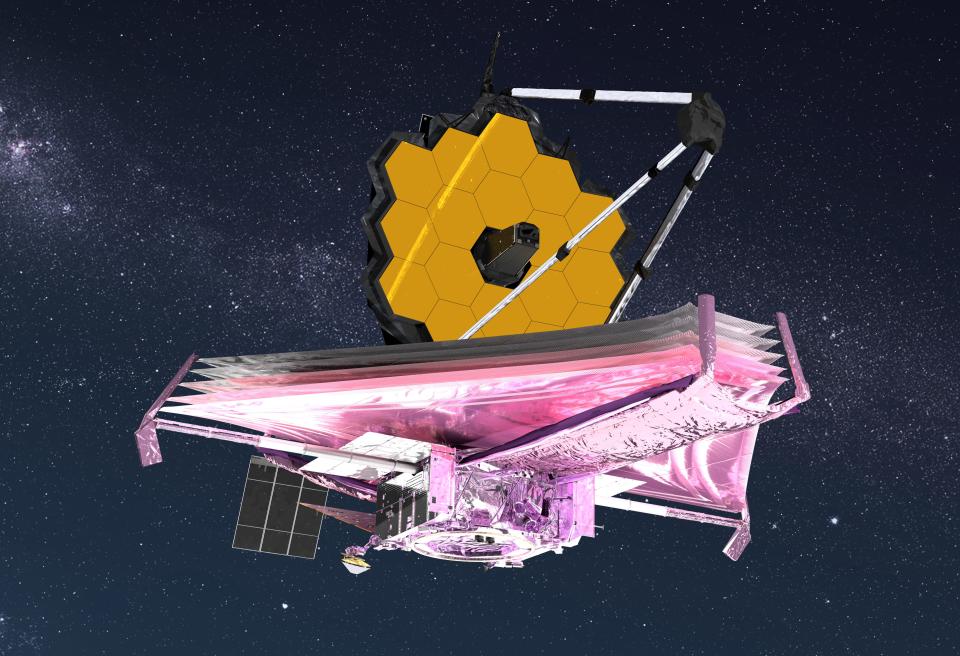321 Launch: Space news you may have missed over the past week

NOTE: Space is important to us and that’s why we're working to bring you top coverage of the industry and Florida launches. Journalism like this takes time and resources. Please support it with a subscription here.
Welcome to 321 Launch, FLORIDA TODAY'S weekly space newsletter. Here are the top space stories of the past week.
Despite chill, SpaceX launches another batch of Starlink internet satellites
A SpaceX Falcon 9 rocket provided some much-needed warmth to the Space Coast late last Tuesday and launched yet another batch of the company's Starlink internet satellites.
Nine Merlin main engines roared to life at 9:02 p.m. EST, punching through Florida's cooler-than-normal 45-degree weather to deliver the 36th batch of Starlink satellites to low-Earth orbit. A total of 49 of the internet-beaming spacecraft were packed into Falcon 9's payload fairing.
Shortly after liftoff, the company wrapped up its 103rd successful landing with the touchdown of Falcon 9's first stage on the Shortfall of Gravitas drone ship stationed southeast of Florida. It marked the Space Coast's third launch of the year, all of which have been hosted by SpaceX and all of which have featured once-rare southern trajectory launches.
OneWeb aims to mass produce satellites at Titusville plant

Walk into the OneWeb Satellites visitor lobby, and you'll notice a throwback wall plaque displaying a black-and-white photo of a Ford Model T, the rudimentary car that debuted in 1908.
So what does a century-old car have to do with satellites?
Just as Ford's manufacturing innovations drastically slashed the time needed to make a car, OneWeb has cut the time need to manufacture a satellite.
"Classically, it would take two years to 10 years to build a spacecraft. We build — from cradle to grave — in about seven days," Hinds said, standing next to the Model T photo.
OneWeb Satellites is building a global internet network by launching a constellation of 648 low-Earth-orbit satellites.
Atlas V in "511" configuration lofts Space Force satellites to orbit

An Atlas V rocket sailed through thin clouds above Cape Canaveral Space Force Station on Friday, kicking off a longer-than-usual mission to an orbit thousands of miles above Earth.
At 2 p.m. EST, the 196-foot rocket vaulted off the pad at Launch Complex 41 and successfully took two identical Space Force satellites on a voyage to geosynchronous orbit some 22,300 miles above Earth. Teams had two hours to launch the mission known as USSF-8 but did not need the extra time.
This was ULA's first launch of the year and the Space Coast's fourth overall. The rocket's 511 configuration – five-meter payload fairing, one upper stage engine, and one solid rocket booster – marked the first and only time that specific model took flight.
Webb Space Telescope in place 1 million miles away from Earth

After a nail-biting 29 days of travel and ultra-precise deployments, the James Webb Space Telescope fired its thrusters one more time Monday to reach its final parking spot a million miles from Earth.
"Webb, welcome home," NASA Administrator Bill Nelson said in a statement after a five-minute burn added just 3.6 mph to the telescope's speed. "Congratulations to the team for all of their hard work ensuring Webb’s safe arrival at L2 today."
L2 refers to a kind of stable orbit known as a Lagrange point. Technically, Webb is now orbiting the sun and is staying in line with Earth about a million miles away.
Moving forward, engineers will spend about three months aligning Webb's 18 gold-coated hexagonal mirrors to the final configuration.
Longtime NASA photographer Klaus Wilckens passes away at 84
Klaus Wilckens, who spent decades documenting the space program through photographs, has died. He was 84.
Wilckens was born in Germany in 1938 on the eve of World War II. When he was 14, his family moved to Brevard County and Wilckens entered Cocoa High School.
There was no NASA photographer during his 38-year career that had more pictures selected as magazine covers or for photo spreads in various publications. Only rarely did a publication give him credit for a picture. Wilckens said knowing that a photograph labeled "NASA Photo" was his was enough.
A 25+ year veteran of FLORIDA TODAY, John McCarthy currently oversees the space team and special projects. Support quality local journalism by subscribing to FLORIDA TODAY. You can contact McCarthy at 321-752-5018 or jmccarthy@floridatoday.com.
This article originally appeared on Florida Today: 321 Launch: Space news you may have missed over the past week

